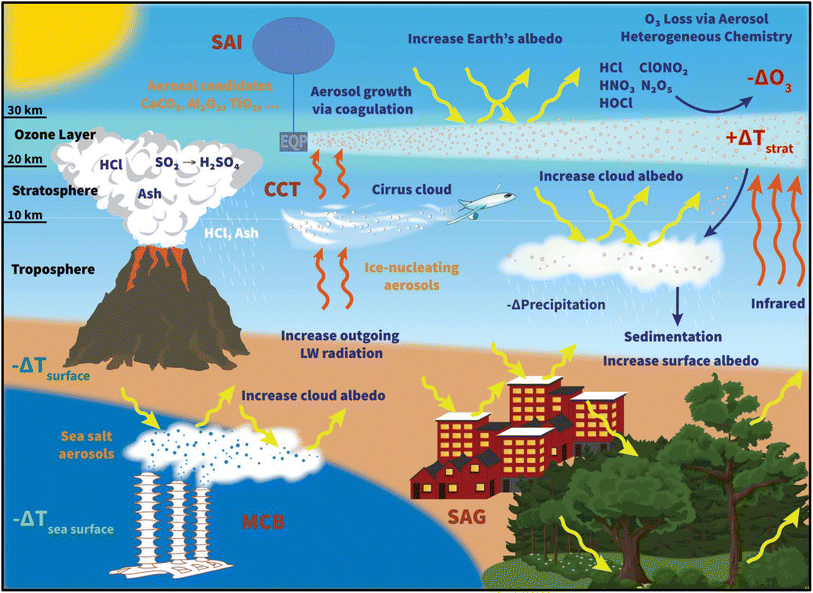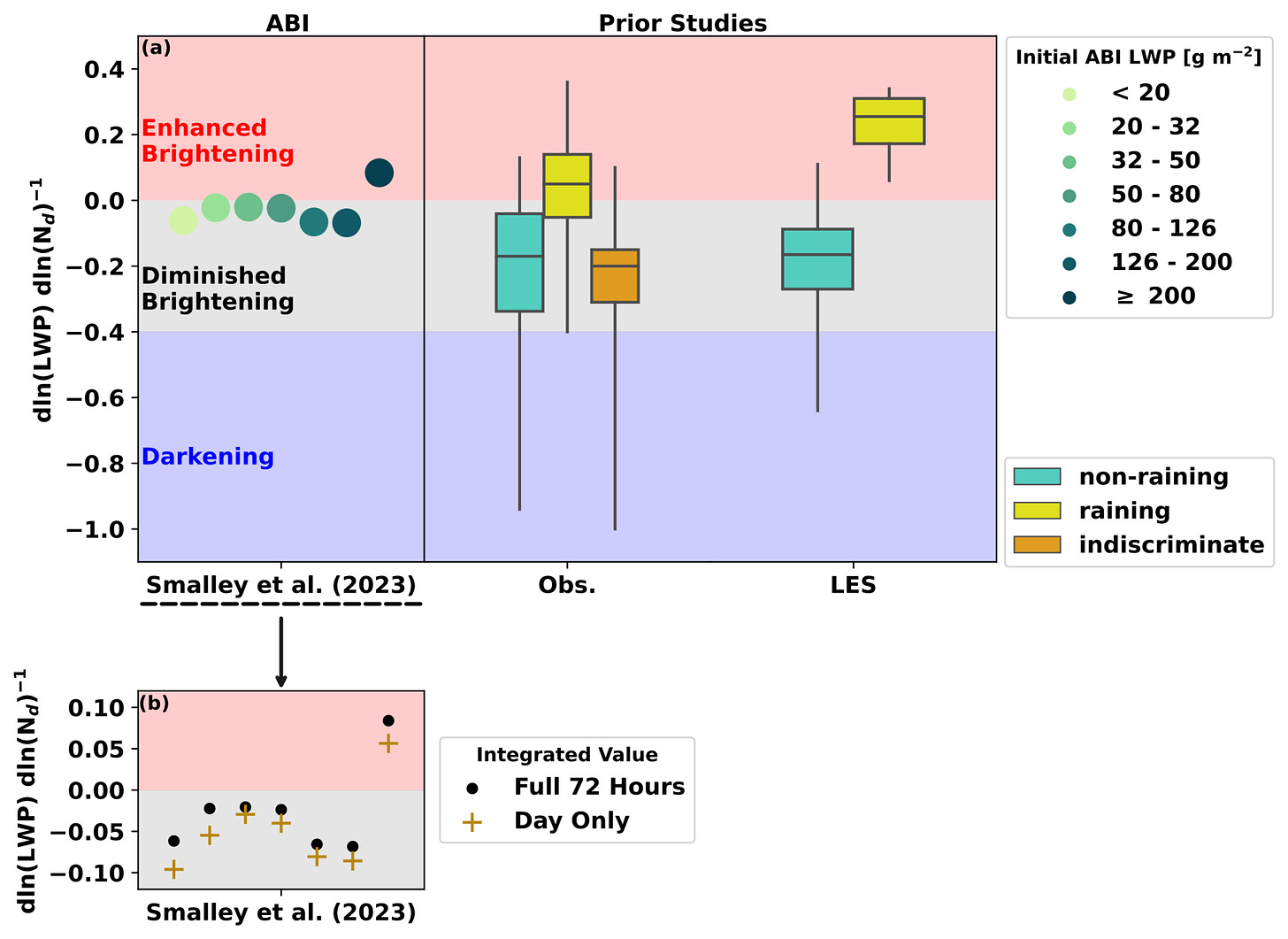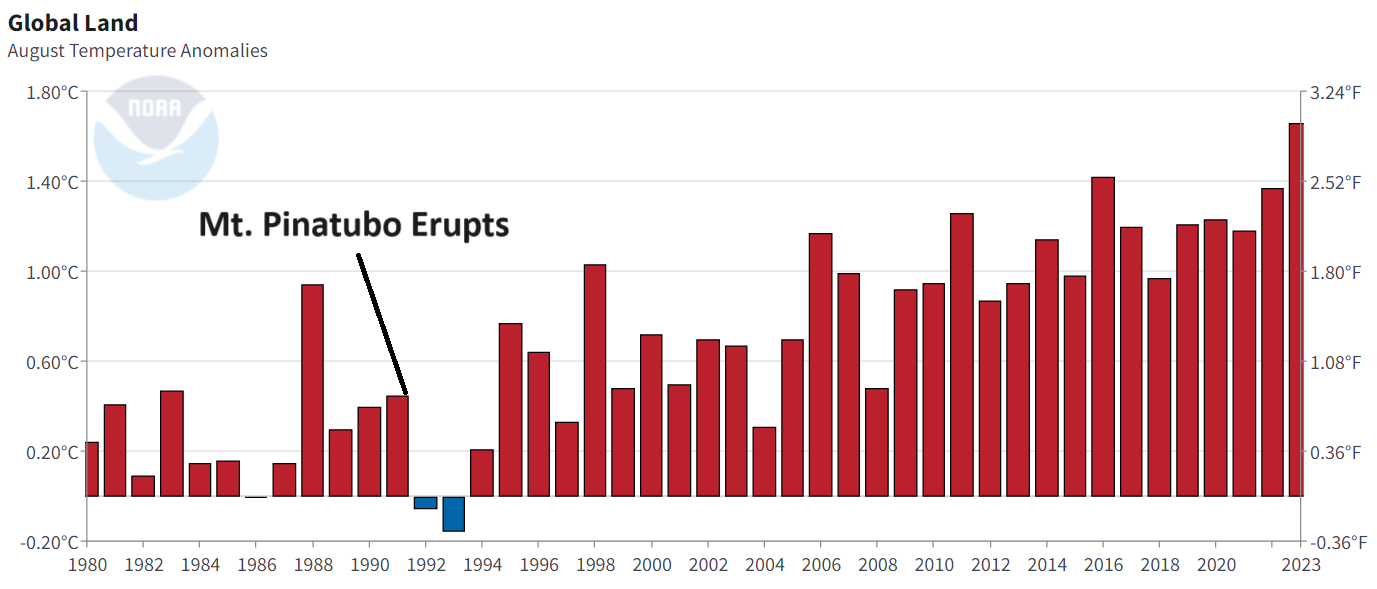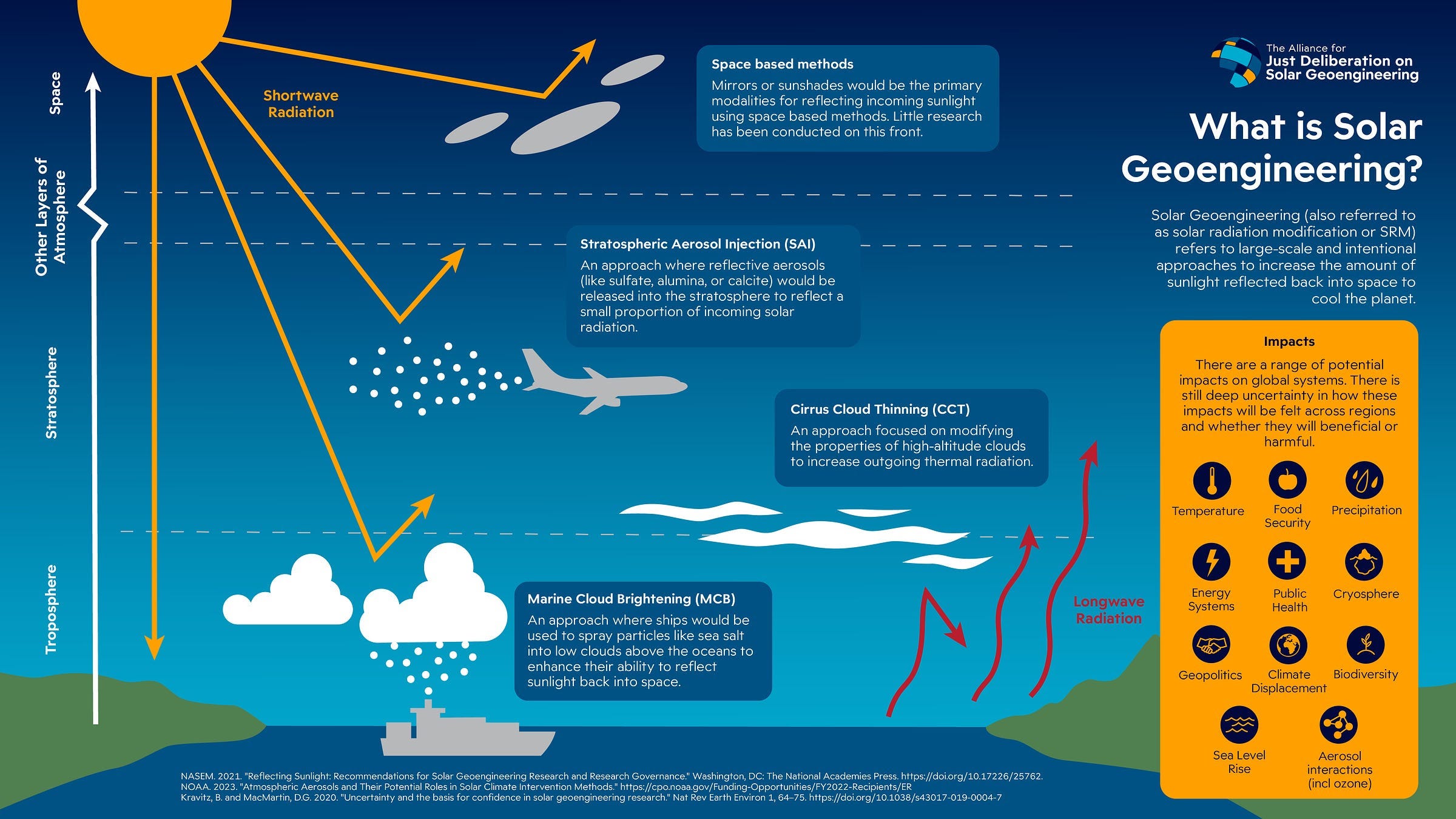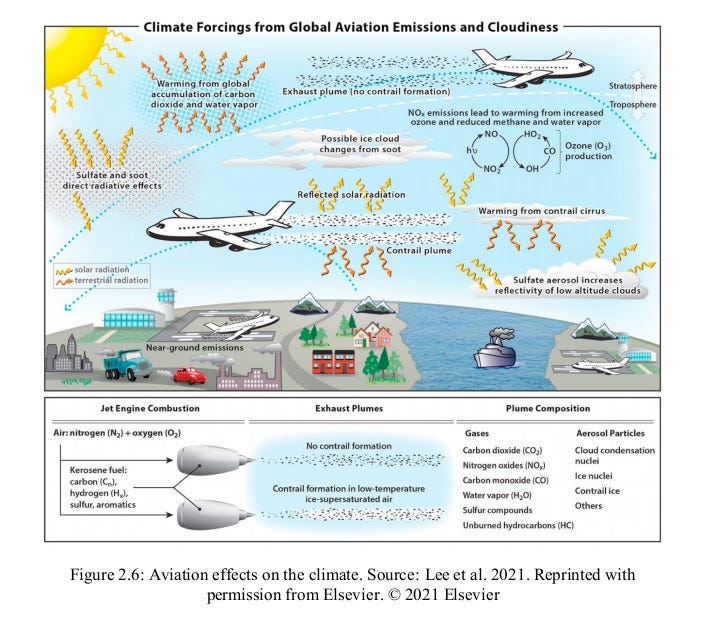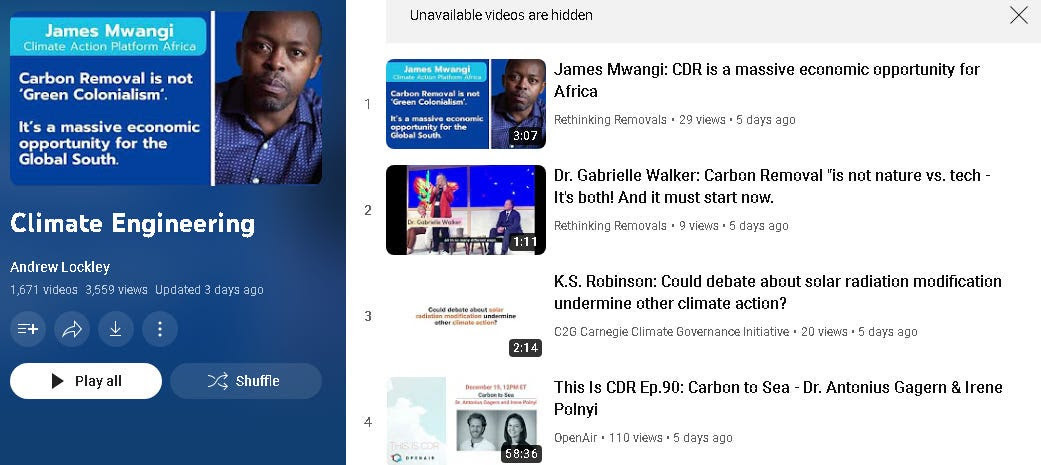The Solar Geoengineering Updates Newsletter (January'2024)
Welcome to the Solar Geoengineering Updates Newsletter, a monthly newsletter that updates you on the developments of everything SRM-related.
RESEARCH PAPERS
Quantifying the Impact of Internal Variability on the CESM2 Control Algorithm for Stratospheric Aerosol Injection
Charlotte J Connolly, Emily M Prewett, Elizabeth A. Barnes, et al. (2024). Quantifying the Impact of Internal Variability on the CESM2 Control Algorithm for Stratospheric Aerosol Injection. ESS Open Archive.
Deep Learning Aerosol-Cloud Interactions from Satellite Imagery
Warburton, P., Shuler, K., & Patel, L. (2023). Deep Learning Aerosol-Cloud Interactions from Satellite Imagery. In Proceedings of the AAAI Symposium Series (Vol. 2, No. 1, pp. 159-165).
Like diamonds in the sky? Public perceptions, governance, and information framing of solar geoengineering activities in Mexico, the United Kingdom, and the United States
Chad M. Baum, Livia Fritz, Sean Low & Benjamin K. Sovacool (2024) Like diamonds in the sky? Public perceptions, governance, and information framing of solar geoengineering activities in Mexico, the United Kingdom, and the United States, Environmental Politics.
Low-temperature ice nucleation of sea spray and secondary marine aerosols under cirrus cloud conditions
Patnaude, R., Moore, K., Perkins, R., Hill, T., DeMott, P., & Kreidenweis, S. (2023). Low Temperature Ice Nucleation of Sea Spray and Secondary Marine Aerosols under Cirrus Cloud Conditions. EGUsphere, 2023, 1-22.
The Potential Environmental and Climate Impacts of Stratospheric Aerosol Injection: A Review
Huynh, H. N., & McNeill, V. F. (2024). The Potential Environmental and Climate Impacts of Stratospheric Aerosol Injection: A Review. Environmental Science: Atmospheres.
Projected future changes in extreme precipitation over China under stratospheric aerosol intervention
Wang, O., Liang, J., Gu, Y., Haywood, J. M., Chen, Y., Fang, C., & Wang, Q. (2024). Projected future changes in extreme precipitation over China under stratospheric aerosol intervention. EGUsphere, 2024, 1-32.
Sensitivities of Large Eddy Simulations of Aerosol Plume Transport and Cloud Response
Dhandapani, C., Kaul, C. M., Pressel, K. G., Wood, R., & Kulkarni, G. (2023). Sensitivities of Large Eddy Simulations of Aerosol Plume Transport and Cloud Response. Authorea Preprints.
Validating a microphysical prognostic stratospheric aerosol implementation in E3SMv2 using the Mount Pinatubo eruption
Brown, H. Y., Wagman, B., Bull, D., Peterson, K., Hillman, B., Liu, X., ... & Lin, L. (2024). Validating a microphysical prognostic stratospheric aerosol implementation in E3SMv2 using the Mount Pinatubo eruption. EGUsphere, 2024, 1-46.
Volcanic forcing of high-latitude Northern Hemisphere eruptions
Fuglestvedt, H. F., Zhuo, Z., Toohey, M., & Krüger, K. (2024). Volcanic forcing of high-latitude Northern Hemisphere eruptions. npj Climate and Atmospheric Science, 7(1), 10.
Diurnal Patterns in the Observed Cloud Liquid Water Path Response to Droplet Number Perturbations
Smalley, K. M., Lebsock, M., & Eastman, R. (2023). Diurnal Patterns in the Observed Cloud Liquid Water Path Response to Droplet Number Perturbations. Authorea Preprints.
Simulation and evaluation study of atmospheric aerosol nonsphericity as a function of particle size
Mao, Q., & Nie, X. (2024). Simulation and evaluation study of atmospheric aerosol nonsphericity as a function of particle size. Particuology.
Implication of stratospheric aerosol geoengineering on compound precipitation and temperature extremes in Africa
Obahoundje, S., Nguessan-Bi, V. H., Diedhiou, A., Kravitz, B., & Moore, J. C. (2023). Implication of stratospheric aerosol geoengineering on compound precipitation and temperature extremes in Africa. Science of the Total Environment, 863, 160806.
Presenting balanced geoengineering information has little effect on mitigation engagement
Merk, C., & Wagner, G. (2024). Presenting balanced geoengineering information has little effect on mitigation engagement. Climatic Change, 177(1), 11.
Modeling the contribution of secondary aerosols on aerosol scattering ensemble: a comparative analysis of the scattering abilities of different aerosol species
Arreyndip, N. A., & Joseph, E. (2024). Modeling the contribution of secondary aerosols on aerosol scattering ensemble: a comparative analysis of the scattering abilities of different aerosol species. Optics Express, 32(3), 4614-4626.
WEB POSTS
It is time to draw down carbon dioxide but shut down moves to play God with the climate (Phys.Org)
The Future of Solar Geoengineering Research (RFF)
Degrees-funded scientists building North-South connections at the ICTP (The Degrees Initiative)
Funding awards for development of an African SRM Research Coalition (The Degrees Initiative)
Could giant underwater curtains slow ice-sheet melting? (Nature)
Make Sunsets Monthly 9,036 Ton-Years (Make Sunsets)
Can $500 Million Save This Glacier? (The New York Times Magazine)
Aria plan reignites geoengineering controversy (Research Professional News)
Saving the Frozen Arctic – A new assessment evaluates potential climate action measures and their feasibility (UArctic)
Permitting for mCDR and mSRM (EPA.GOV)
Geoengineering Now! (The Seeds of Science)
Why geoengineering is a human rights nightmare (Wave)
Pakistan needs robust regulatory framework, capacity buildup to tackle SRM regime: Experts (Associated Press of Pakistan)
THESIS
Climate response of abrupt and steady stratospheric aerosol injection
BOOK CHAPTER
Geoengineering and Public Policy—Routledge Handbook of Environmental Policy
POLICY DIGEST
A New Era of Policy in Solar Geoengineering
PROJECT
Conditions for Responsible Research of SRM – Analysis, Co-Creation, and Ethos (Co-CREATE)
REPORTS
Frozen Arctic—Horizon scan of interventions to slow down, halt, and reverse the effects of climate change in the Arctic and northern regions: A UArctic Rapid Response Assessment
Partially counteracting climate change in the short to medium term: options globally and for Switzerland
JOB OPPORTUNITIES
UCL Earth Sciences PhD Scholarship | Deadline: 05 February 2024
“If you're from an under-represented group and would like to work on an under-represented field, you could apply to do a PhD on Solar Geoengineering & various other topics.”
Postdoctoral scholar or researcher on climate intervention by seeding polar mixed-phase clouds at University of California | Los Angeles
“The Aerosol-Climate Interactions Group – UCLA are seeking a talented and driven postdoctoral scholar or researcher to join our multidisciplinary team seeking to determine whether seeding wintertime polar mixedphase clouds could be a viable climate intervention technique. This recently proposed technique, termed mixed-phase cloud thinning (MCT), could potentially produce substantial wintertime cooling of the polar regions, thereby mitigating the impacts of global warming on these sensitive regions. Moreover, MCT could have fewer negative side effects than more established climate intervention techniques.”
UPCOMING EVENTS
(NEW) Solar Climate Intervention Virtual Symposia | 09 February 2024
104th Annual Meeting by American Meteorological Society | 28 January - 01 February 2024
Climate Engineering (GRS) | 17-18 February 2024
GRC Climate Engineering 2024 | 18-23 February 2024
PODCASTS
Blocking the Sun Is NOT a Climate Solution! | Organic Consumer Association
“[W]hen you start to reflect light away from the planet, you can easily imagine a chain of events that would extinguish life on earth.”
That’s what David Keith, one of the world’s top solar engineering scientists, told the New Yorker about his own life’s work.
With a warning like that, it’s easy to see why Mexico is banning solar geoengineering. That, and the fact that a start-up called “Make Sunsets” was caught trying to block the sun in Baja California Sur—without permission from, or even notifying, the government!
Moving in the other direction, the Biden Administration is officially exploring ways to stop sunlight from reaching the Earth, while the European Union has recently floated “a potential international framework” for going forward with research into this misguided and ineffective attempt to address the global climate crisis.
Few policy makers in the U.S. have tried to wrap their heads around this issue, but a group of Rhode Island state legislators have drafted a bill, the Atmosphere Protection Act that’s a great introduction.”
C2GTalk: Why does the world now need to consider solar radiation modification? with Kim Stanley Robinson | Carnegie Climate Governance Initiative (C2G)
“Many objections to solar radiation modification (SRM)--such as the fear it could undermine other forms of climate action--have been overtaken by events, says The Ministry of the Future author Kim Stanley Robinson in this C2GTalk. The world is in a growing crisis, and cutting and removing emissions is taking too long. It’s time to learn whether SRM can help, and how to govern it.
Kim Stanley Robinson is an American science fiction writer. His books include the best-selling Mars trilogy, Red Moon, New York 2140, and The Ministry for the Future. He was part of the U.S. National Science Foundation’s Antarctic Artists and Writers’ Program in 1995 and 2016, and a featured speaker at COP-26 in Glasgow, as a guest of the UK government and the UN.”
David Keith on Climate Systems Engineering | Challenging Climate
“David Keith is a Professor in the Department of Geophysical Sciences at the University of Chicago and the Founding Faculty Director of the Climate Systems Engineering initiative. Keith previously led the development of Harvard’s Solar Geoengineering Research Program.
In this episode, we discuss Keith’s Climate Systems Engineering initiatives, carbon dioxide removal (CDR) and geoengineering techniques. Drawing on David’s decades of expertise, we dive deep into topics such as CDR, solar geoengineering, ice sheet geoengineering.”
Find More Podcasts on Solar Geoengineering Topic Here:
YOUTUBE VIDEOS
Solar radiation modification in the United States: A Discussion | Climate Overshoot Commission
“24 January 2024, Commissioner Frances Beinecke chaired a webinar with panelists Lloyd Whitman, Yashasvi Raj, Shuchi Talati, and Ted Parson.”
The Future of Climate Change: Solar Geoengineering and Carbon Management Explored | THE GEOSTRATA
“Dr. Talati is the founder of the Alliance for Just Deliberation on Solar Geoengineering, a global effort to elevate the voices of climate-vulnerable communities & nations in solar geoengineering decision-making. Our conversation focuses on policies that are required to build sustainable and equitable technological carbon removal at scale.”
Solar geoengineering - Mankind's New weapon to combat climate crisis | SGS MEDIA INC.
Leon Simons: "Aerosol Demasking and Global Heating" | The Great Simplification #105 | Nate Hagens
“On this episode, Nate is joined by climate researcher Leon Simons to unpack recent trends in global heating during 2023 and potential explanations and subsequent projections for the coming year. While the connection between human emitted greenhouse gasses and global warming is scientifically agreed upon, the other complexities and feedbacks of our climate system are still just beginning to be understood. Today, Leon theorizes on the intensity of aerosol masking from particulates such as sulfur, based on the connection between recent changes in marine fuel sulfur requirements and corresponding climate data. How will the global trend towards aerosol reductions affect near and long term global heating? What does this catch-22 mean for potential future climate action and policy? How should we be thinking about creating a more simplified global system in response to the unknown unknowns of our potential future climate?”
Revolution Wrap-Up: Conclusion & Next Steps | Roger Hallam
Can solar geoengineering help undo climate change? | The State of Knowledge
“One of the more controversial solutions to the effects of the climate crisis is geoengineering, that is according to Harvard’s geoengineering research program, ‘a set of emerging technologies that could manipulate the environment and partially offset some of the impacts of climate change’. But what is the field's current state?”
Geoengineering: Who Should Control Our Atmosphere? | Climate One
“According to the latest IPCC Assessment Report, we’re currently on course for at least 3°C (5.4°F) of warming by 2100 even if all of the voluntary Paris Agreement emissions pledges are fulfilled. Clearly the world needs to do more to reduce emissions. But what if that’s still not enough?”
No 1.5 Without Intervention | Climate Emergency Forum
“The Centre for Climate Repair at the University of Cambridge (CCRC) and the Climate Emergency Forum (CEF) present a panel discussion at COP28 in Dubai, UAE on the topic of "No 1.5 Without Intervention."
This video was recorded on December 10th, 2023 at COP28 in Dubai, UAE, and published on January 11th, 2024.
Charles Gregoire who is co-producer of the Climate Emergency Forum along with Heidi Brault, introduces the event. He emphasizes that limiting global temperature rise to 1.5 degrees Celsius requires interventions beyond emissions reduction.
Professor Hugh Hunt discusses the SPICE project, investigating stratospheric aerosol injection for solar radiation management (SRM) as well as marine cloud brightening. He emphasizes the importance of research in understanding the risks and benefits of these interventions to address the urgent challenges posed by climate change.
Dr. James Hansen, via video recording, highlights the urgency of addressing climate change, emphasizing the need for intervention due to the already surpassed 1.5-degree threshold.
Anni Pokela, a project manager at Operaatio Arktis, emphasizes the severity of the Arctic climate catastrophe and the irreversible damage, even with rapid emissions cuts. She introduces the concept of climate repair, advocating for additional interventions beyond emissions reduction, acknowledging potential risks but stressing the need for research.”
COP28 Debrief to Healthy Planet Action Coalition | Robbie Tulip
“Viktor Jaakkola of Operaatio Arktis and Hugh Hunt of the Cambridge Centre for Climate Repair discussing their experiences and impressions of COP28.
Viktor Jaakkola has been working full-time in Operaatio Arktis for the last year and a half. Operaatio Arktis is a youth-led science communication project based in Helsinki, with a special focus on Arctic sea ice preservation and climate interventions that could help stabilize the climate situation in the Arctic.
Education-wise Viktor has a couple of years of Environmental Economics studies under his belt, but those studies are on break for now.
Professor Hugh Hunt is Deputy Director of the Centre for Climate Repair. He is Professor of Dynamics and Vibrations in the Department of Engineering at the University of Cambridge. He has been a lecturer here since 1989, shortly after obtaining his PhD in Engineering from Cambridge. He is also a College Lecturer and Director of Studies in Engineering at Trinity College. His principal research interest is in albedo enhancement for climate intervention - "how can we refreeze the Arctic?" Within the Centre for Climate Repair he is most interested in the engineering aspects of Marine Cloud Brightening (MCB) and Stratospheric Aerosol Injection (SAI). Other interests include railway noise and vibration, gyroscopes and boomerangs, wave power, renewable energy, tower clocks and the vibration of bell towers.”
Scientists mull Solar Radiation Management | M2M Trend
“As we argue over freeing ourselves from fossil fuels, can SRM buy us time to develop green energy we need?”




